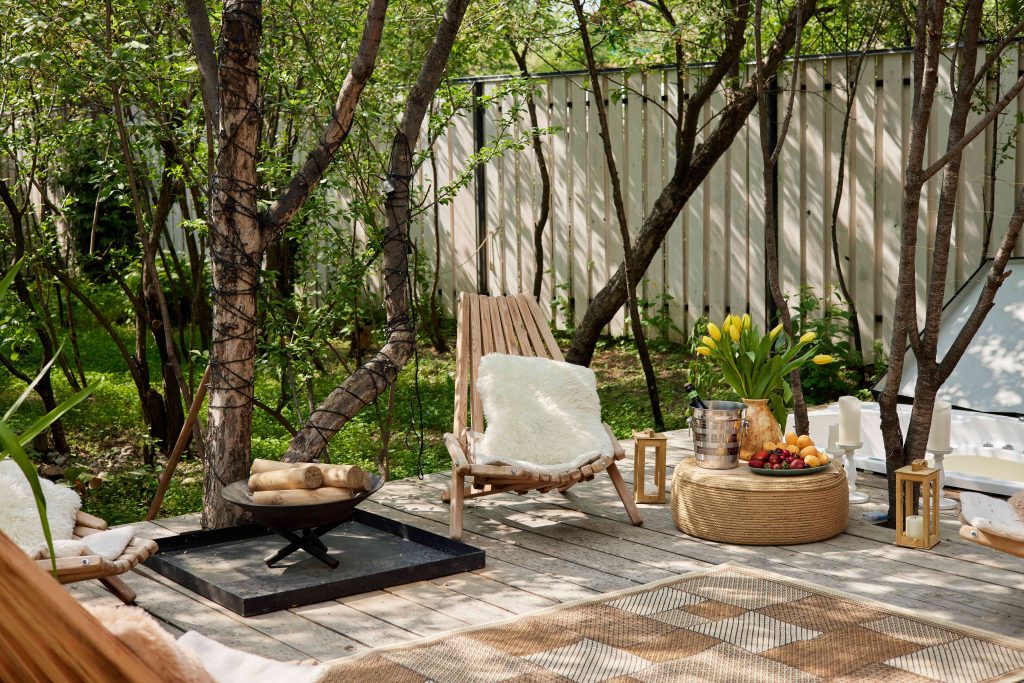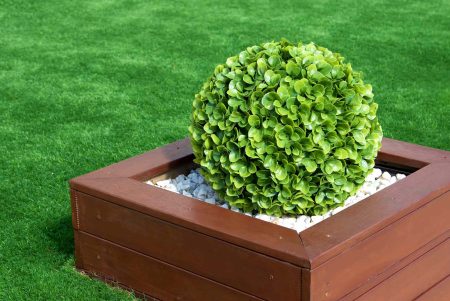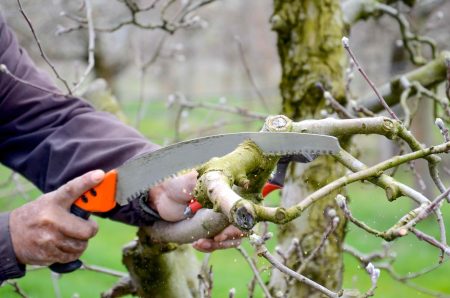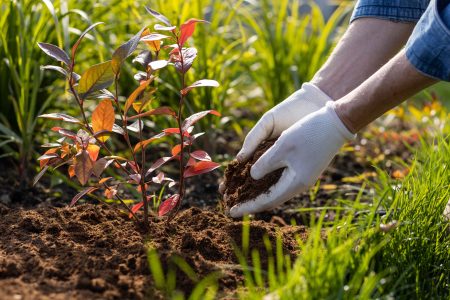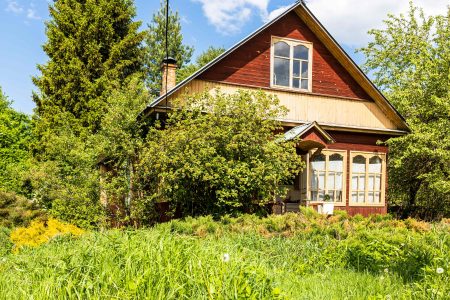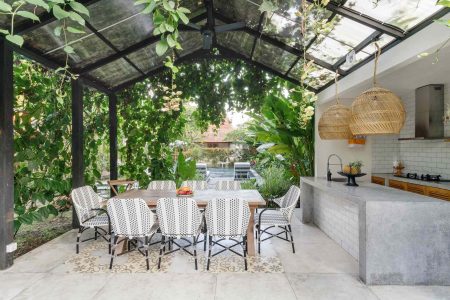Your backyard doesn’t have to stay the same every year. If you are looking for ways to add some flare, visual interest, or just some additional flowers, there are plenty of things you can do to freshen up a backyard or backyard garden.
To get the scoop on all the backyard trends that will be happening in 2025, we chatted with gardening experts. These are the garden and backyard trends they foresee taking over 2025.
Meet the Expert
- Dee Dee DeBartlo is a master gardener, garden designer, and the co-owner of Westport Botanica, a landscape design firm that specializes in outdoor and indoor container gardening.
- Amy Yarger is a horticulturist and senior director of horticulture at the Butterfly Pavilion, the first Association of Zoos and Aquariums-accredited invertebrate nonprofit zoo in the world.
Elaborate Outdoor Living Spaces
In recent years, comfortable outdoor living spaces have seen a surge in popularity. Think cozy patio furniture in soft, high-quality materials, and a sprawling outdoor cooking set up.
“Simple BBQ setups have evolved into outdoor kitchens, and this trend is only expected to grow in 2025,” says Dee Dee DeBartlo, a master gardener, garden designer, and the co-owner of Westport Botanica.
She sees the trend of such elaborate “outdoor rooms” as continuing as more and more people invest in grand outdoor kitchens and purchase multi-functional furniture that offer flexibility and comfort to a backyard.
Want more gardening tips? Sign up for our free gardening newsletter for our best-growing tips, troubleshooting hacks, and more!
Forest Gardens
An interest in sustainability and conservation will still be the focus in 2025. In fact, more and more people will be turning to forest gardens in backyards, says DeBartlo.
“It’s an ancient form of gardening that mimics natural woodland ecosystems by layering trees, shrubs, plants, and groundcover,” she says.
Since they are designed to mirror local environments, backyard forest gardens are resource-efficient and low-maintenance because they can easily survive in your USDA zone. Plus, forest gardens promote biodiversity by allowing a range of plant life where many different wild animals and insects can make a home.
To get the look, add native trees to your backyard, then add in some shrubs and layers of perennial native plants or forest groundcovers.
Art in Landscaping
Residential outdoor art is popping up everywhere, and it will become even more popular in 2025. Outdoor art includes things like obelisks, arches, and trellises, everything in the backyard that DeBartlo calls “the jewelry of the landscape.”
To get the look, use store-bought garden accessories like trellises and obelisks that function as both decor and plant supports, where vining plants can grow. And to draw attention to the artwork, add these items to crucial spots in your backyard or garden, like along pathways or in garden beds, to add visual interest without overwhelming the space or your budget.
But also, don’t be afraid to create your own backyard art.
“One way to incorporate landscape art into your backyard is by creating your own art from found materials like driftwood or stones,” DeBartlo says.
Container Patio Gardens
Container gardens are on the rise. This is because more people in urban areas and smaller homes are looking to garden, making container gardening ideal for those with limited space, like balconies, patios, or smaller backyards.
But container gardens are great for any gardener because they come with so many benefits for plants.
“Indoor and outdoor container are excellent for controlling soil conditions, drainage, and moisture levels, making it simple for both beginner and experienced gardeners,” DeBartlo says.
To create a container garden, choose plants that thrive in similar sunlight and water conditions, and next layer in different heights, colors, and textures.
Chaos Gardening
Mowed emerald, green lawns are on their way out, say garden experts, and the same is true of backyards.
Instead of green grass backyards, gardeners are turning to “chaos gardening,” says Amy Yarger, Butterfly Pavilion senior director of horticulture. Think of this type of gardening as like mixed meadow plantings or wildflower gardens, something you’d find easily thriving in nature.
“There is often an emphasis on native plants in these gardens, but not always,” Yarger says. However, chaos gardens still avoid invasive plants and instead leans into native plants whenever possible.
“In other words, chaos gardening doesn’t mean hands-off,” she says. “Some maintenance is still required to get the desired effect.”
What you want to aim for is a balance between natives and nonnatives—hence a fusion of a little bit of chaos with plants allowed to spread out.
Read the full article here



